 Description: Relates the biblical story of Rahab, the spies, and the fall of Jericho as recorded in the book of Joshua from the perspective of young Talia, whose father Yakesh is one of Rahab's brothers. Rating: 4 out of 5 The Window in the Wall by Ginny Merritt is based upon the bible story of Rahab and the spies, and the fall of Jericho. Although most Christians will know this story well it is probably not as well known amongst children. By making the main character a young girl, Talia, Merritt makes it suitable for young readers to enjoy.
Talia lives with her parents and brother within the walls of Jericho and loves helping her father in the flax fields. An approaching army strikes fear into her heart despite reassurances that nothing can destroy the strong walls and get into the city. However Talia’s aunt, Rahab, has been told different by a couple of Israelite spies who promise her and all her family safety as a reward for helping them. As many family members that Rahab can persuade sit and wait in Rahab’s room to see what happens and hopefully be saved. Unfortunately there are a few people who refuse to believe in what Rahab is saying nor that there is a God that is Lord of all. Those familiar with the story will know the outcome of the story, but children will race through this book eagerly wanting to discover what happens to Talia and her family. As an adult reading The Window in the Wall the references to Rahab’s characteristics will make more sense whereas they will most likely go over children’s heads. Having it written from a child’s perspective will help children to learn this bible story. Talia has many questions, which adults will not answer, as will the readers! Merritt has helpfully included a pronunciation guide at the back of the book to help readers with the tricky foreign names that they encounter in the story. As an adult these names were not particularly difficult, but this would be a great benefit to younger readers. Adults that read this book need to keep in mind the age of the target audience. The story does not go into much depth and may not be that engaging to those familiar with their bible stories. The story of Rahab is not an easy one to rewrite for children but Merritt has done an excellent job. Books such as The Window in the Wall would be a great way of teaching Christian children about their faith without boring them with sermons.
0 Comments
Buying Samir is the second book in the India Street Kids series by Kimberly Rae. Previously Jasmina and her brother, Samir, had been sold to traffickers who treated the children as slaves. Jasmina, however, managed to escape and found safety amongst a group of American missionaries. Now aged 14, Jasmina is determined to locate and save her brother.
Initially with the help of one of the missionaries, Jasmina begins searching for Samir at various locations hoping she can free him from whatever slavery he has been forced into. However desperation encourages Jasmina to secretly go alone on this dangerous mission. Although she finds her brother there is no happy reunion. Samir has become one of the traffickers and Jasmina finds herself in a lot of trouble. Jasmina learns a lot more about the world she lives in, who to trust and who to avoid. She also learns of Christian forgiveness – a concept that was alien to her as she was used to being punished. Rae shocks the reader with her descriptions of horrors children in India face on the streets. Many are tricked into dreadful situations by false promises of luxury. What is the most disturbing is that this story is not about the past, these things are happening now! Thankfully there are people such as the missionaries who, with Gods help, give up their time to rescue these children and give them a better life or restore them to their families. Buying Samir is a very short book and suitable for both adults and teens. Readers would benefit from reading the previous book first however Jasmina’s narrative reflects on the past providing enough information to understand what is going on.
Kimberly Rae draws attention to the ongoing trafficking of children in India in her young adult novel Capturing Jasmina. Jasmina was only ten when her father sold both her and her brother Samir to a man promising safety and good education. In reality the siblings end up in a sweatshop slaving over clothes to be sold in America. After three years they manage to escape only to be trafficked a second time. Eventually Jasmina and Samir are separated and Jasmina becomes a street kid.
Whilst living on the streets Jasmina encounters a Christian missionary, Asha, rescuing women from brothels by either offering them a safe place to live or at the very least spiritually, by teaching them about God and Jesus. Intrigued Jasmina follows Asha who then offers to help her too. After having her childhood robbed from her, it seems like Jasmina, with the help of those who trust in God, will get back on her feet again. Despite being a short novel, Rae paints a contrasting image to what the western world is used to. Jasmina finds the concept of a simple toilet baffling. It is not until you hear or see what is happening to innocent people in other parts of the world that you realize there are so many things in life you take for granted. Capturing Jasmina emphasizes how difficult it is to escape once trafficked. In these situations people belong to everyone but themselves. They have no freedom and running away can cause more problems than it solves. The novel also shows what Christians can do to help. Although no one can completely solve the problems, the tiniest piece of aid they can provide is a step in the right direction. It was slightly disappointing that we do not find out what happened to Samir once he was separated from his sister. Jasmina’s first person narrative makes it clear that what she wants most is to be reunited with her family. In a way, although there is a positive ending, not yet finding her brother makes it clear that there cannot always be happy endings. It is not possible to save everyone. Written from a young teenagers point of view makes this book suitable for ages twelve and older. Christians will appreciate the biblical references however there is not too much religion for non-believers or those of other religions to get offended by.
The Murder of Adam and Eve by William Dietrich is a young adult, science fiction thriller combining aliens and time travel. What started out as sixteen year old Nick Brynner researching for his History Day project on an out of bounds island, leads to him falling through a wormhole, meeting an alien – a Xu, and eventually finding himself in prehistoric Africa.
Before finding himself in a completely different era, Nick meets a biology-loving teenager, Eleanor Terrell, who tells him she had been abducted by aliens. Initially thinking she is crazy, Nick believes her once one of the said aliens appears to them and claims they have been chosen to try and save mankind. The Xu intend to wipe out humanity by travelling back in time and killing the two people from whom the human race descend from – the people named Adam and Eve in the bible. However they are giving Nick and Ellie a final chance to prevent this from happening. Once transported to ancient Africa, Nick and Ellie start a desperate search for Adam and Eve in order to protect them from the Xu. But in order to do this they need to be able to take care of themselves in a place where water, food and shelter are not easily come by. Once locating the people they seek for they begin to realize the enormity of the task they have been given; whatever they do will have a massive impact on the future of the world. The Murder of Adam and Eve is an interesting concept that really gets you thinking about the way in which the world has developed. Despite the usage of the biblical names Adam and Eve this book is not based on religious theory at all. It is a science-based idea maintaining that the human race can eventually be traced back to two people. Many readers may be able to relate to both Nick and Ellie’s personalities. Nick in particular is a quiet, unnoticeable boy without any great talent, however during the book he grows into a more confident person and becomes the leader needed in order to save mankind. Overall this fast paced book is fun to read. Although a little too far-fetched to take seriously, it makes the reader think more about the ways humans have behaved over the years but also highlights the positives and our ability to make things and learn. The clash of the two different time periods makes it a thought-provoking novel that many teenagers will love to read.
The Followers is the compelling second novel of the British author Rebecca Wait. Stephanie is living a mundane life with her daughter, making what little money she can at a local coffee shop. But then she meets Nathaniel, a man who says he wants to love her, look after her and make her happy. Stephanie and Judith move in with Nathaniel at a place known as the Ark, with a bunch of other people who are part of a religious cult. Nathaniel, who proclaims himself as a prophet, is determined for Stephanie to forget about her past and turn herself to God. Judith, however, is not so easy to persuade. However a turn of events raise questions as to whether Nathaniel should really be trusted.
The story begins with Stephanie in prison where she is serving her sentence for a crime the reader has no knowledge of. It then switches between “before” and “after” with “before” being when Stephanie meets Nathaniel and “after” involving the prison scenes. From the very start the reader knows something bad is going to happen, that Stephanie is going to break a law bad enough for her to be imprisoned. The following chapters keep readers guessing what exactly that offence would be. The novel gets darker and darker as the truth about the running of the Ark is revealed. With violence and punishments being doled out, Nathaniel is no longer the man he originally appeared. As the book climaxes it is shocking when the reader realizes what it is that Stephanie is going to do. As well as Judith there are other children living in the Ark, but the difference is they were born there and have known nothing else except doing things in the name of God. Judith on the other hand was not sheltered from the “evils” of the outside world and thus has a different opinion about the way Nathaniel treats his followers. As it turns out, Judith is right to distrust the ways of this man, but there is nothing she can do about her situation. Although containing a strong religious theme, The Followers is not a piece of Christian fiction. The behaviour of Nathaniel and the members of the Ark does not reflect the average Christian, and everyone, whether religious or not, will be shocked by the happenings in this book. It took a while to get into the storyline and the first few chapters did not feel particularly well written, however readers will quickly be sucked into the plot and will want to keep reading to find out what happens. The Followers is not a happy story and there are a few sad and distressing scenes, which make the reader really feel for some of the characters. Overall it is a very interesting read. 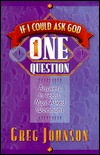 Answers to teens' most asked questions. Ideal for young Christians who are sorting through questions about God, the Christian life, and the Bible. Shows that God isn't afraid of a heart that is genuinely searching. Rating: 3.14 out of 5 Whether you have been brought up in a Christian family or have made the decision to turn to God yourself, religion can still be very confusing. Greg Johnson has worked with teenagers for fifteen years and has compiled “80 Answers to teen’s most-asked questions.” Johnson’s aim with If I Could Ask God Just One Question is to aid the reader’s progress towards their goal of understanding the bible.
Johnson maintains that all answers to questions that matter can be found in the bible. He tries to prove this by answering each question firstly with a bible verse or passage, before explaining it in an informal, more relatable manner. Presumably, the questions discussed are what teens have directly asked the author, or questions he has heard throughout his career. Many of the questions are generalized, such as how to become a better Christian, fears about being mocked in school, worries about sin and not going to heaven, and so forth. On the other hand there are a few deeper questions, for example why do bad things happen? These are not simple yes/no questions that can be stated as fact. Many of the answers are up for their own interpretation depending on the reader’s own circumstances. This may make things more confusing, however something may hit home and open their eyes in recognition of the Christian faith. Although written informally and appropriately for teenagers, it is still obvious that this is an adult talking to someone considerably younger than himself. Johnson includes his own personal experiences, however they are slightly outdated compared with the issues modern-day teens may face, e.g. social media. Johnson tries to make the Bible a less intimidating book. He suggests a chapter order to follow for those new to the Christian faith. The layout of If I Could Ask God Just One Question lets readers dip in and out, reading the answers to questions that relate to them or that they have thought of at some point themselves. It is probably not wise to read from front to back in one sitting, but instead to take the questions one at a time, analyzing the answers and relating them to personal experience. Note pages have been included for the reader to jot down any thoughts they have whilst reading. Ultimately this book helps teenagers to feel less alone and overwhelmed with their newfound faith. Despite this there is nothing to stop older Christians from benefitting from it too. Everyone needs a reminder once in a while, and a nudge back onto the right path in order to continue living a humble, Christian lifestyle.
“My name is Henrietta S. Robertson. That’s my English name… My Chinese name is Ming-Mei.”
As the child of members of the Interior Alliance Mission, Henrietta has grown up between two cultures: English and Chinese. From the age of six she was sent to boarding school on a mountain in the Jiangxi Province, where four years later she remains as a small, pale, lonely girl. For a girl as young as ten, Etta has a big imagination. She decides that God has called her to be a prophetess, and encourages the other girls in Dormitory A to join her in a Prophetess Club. This results is Etta getting into all sorts of trouble as she naively goes about inventing prophecies; all the while the Second Sino-Japanese War gets closer and closer to their mountain sanctuary. Told mostly from Etta’s point of view, In a Land of Paper Gods is a hilarious historical novel about a young girl’s innocence. A large part of the story is about the missionary school rather than the ongoing war, therefore the focus is on Etta’s interpretation of the bible and her understanding of the differences between Western Christian and Chinese culture. However, once America joins the war effort, it is shockingly quick how the tale can go from humorous to heartbreaking. The other character who plays a large part in this novel is Muriel, a dorm aunty, whom Etta regards highly. Muriel wanted to be a missionary but instead has found herself working at the Lushan school, keeping an eye on the ten and eleven year old girls. Although most of the book is written in Etta’s first person narrative, Rebecca Mackenzie has also included the occasional diary entry from Aunty Muriel. Since these are so few, it is not clear what their purpose is, as the story could easily continue without them. Despite being an historical novel, In a Land of Paper Gods focuses less on fact and more on the impact the times had on a young girl. It is interesting to see the character development of Etta as she goes from a naughty, attention-seeking schoolgirl, to a young woman who must fend for herself. All the while she has her belief in God to resort to for explanations about the world she is living in. The reader also witnesses the growth of a relationship between Aunty Muriel and Etta. To begin with it is that of an adult and child, however it ends with them being equals in their suffering. In a Land of Paper Gods is a pleasure to read. It is comically entertaining to begin with as the reader grows to love the characters, particularly mischievous Etta. It is hard to put the book down due to pure delight of the storyline, yet when the story turns darker it is just as difficult to put down, as we want to find out if the characters are going to be okay. For some people, the Christian content will not mean anything, however it is possible to enjoy the novel without a religious background. For those, like myself, who do have a Christian upbringing, this aspect makes the story even better. Readers may recognize themselves or of their childhood in Etta, particularly her understanding of the bible. Overall I loved this book. I was not sure what to expect, and have often found historical novels set in China to be rather dull. Therefore I was pleasantly surprised to discover how good this book was. I encourage others to read In a Land of Paper Gods, and I look forward to reading what Mackenzie writes next.
In the Shadow of David is Martin Baggen’s attempt at reimagining “the greatest story ever told,” i.e. the life of Jesus Christ. Beginning on the banks of the river Jordan where John the Baptist is washing away the sins of his followers, the story continues before concluding with the resurrection. Told through the eyes of supporting characters, the details of Jesus’ life, or in this instance Yeshua’s, are reinvented in fairly accurate historical settings.
Unfortunately, Braggen’s attempt at originality is going to upset 2.2 billion people. Instead of telling the story of Jesus in the manner he is portrayed in the Bible, the author pens the character Yeshua and claims that there was no “Son of God.” The names, settings and historical facts all remain the same or similar in this version of events, however the miracles: Lazarus’ death, water into wine, the resurrection of Christ/Yeshua, were all shown to be a charade. According to In the Shadow of David, the “Son of God” was a charlatan attempting to reunite the Jews and overthrow the ruling Romans. By mocking Christianity, Martin Braggen has wasted his writing talent with this blasphemous novel. Granted there are many people who try to prove the inexistence of a god, however in these instances there are always counter arguments. By containing this controversial opinion in a story, it prevents any other theories or beliefs from contributing. Many may purchase this book with the mistaken idea that it will convey an in-depth narrative of the life of Jesus. What they will find instead is a disappointing atheist version instead. It is doubtful that readers will get to the end of the book, despite it not being overly long, after slamming it shut in anger and frustration.
In the early hours, as many people’s alarm clocks prepare to go off, BBC Radio 4 broadcasts a daily prayer and reflection. Prayer for the Day Vol. II is the second book published by the radio team encompassing more reflections for daily inspiration. With over half a million devoted listeners tuning in to the station everyday, this second volume promises to be as popular as the first.
After a brief foreword by Bishop James Jones, who explains that prayer should be a daily part of life – not just for times of tragedy - an individual reading is provided for each calendar month. There are 365 (leap years have evidently ceased to exist) meditations or reflections lasting only a couple of paragraphs, followed by a short, one line prayer. Each entry has at some point featured on the radio programme within the past decade, and offers thoughts and perspectives about current challenges, opportunities, gratitude, hope and joy. The idea of the Prayer for the Day radio broadcast is to equip the listener with the positive attitude to commence the day. Unfortunately this is only beneficial for the early risers, meaning that those who enjoy a lie-in or live an alternative lifestyle miss out on these words of wisdom. With this book, no one misses out on the opportunity to pray; it can be read whenever and wherever one pleases. Although largely targeted at British Christians (of all denominations), contributors include Jews, Sikhs, Muslims and Buddhists. Admittedly, Christianity is the most predominate, however other religious insights give people the chance to view ideas from an alternative perspective. None of the daily entries attempt to convert readers to a different religion; instead they reveal how similar the ethics and moral codes are. If religious labels and prejudices were removed, the world would be a much more peaceful planet. There are already books, diaries, magazines and so forth offering a similar day-to-day reading, however some delve too deeply into the bible (or indeed the Qur’an etc) that the message gets lost in profound ideas and complicated language. Prayer for the Day is compiled by dozens of different people; some are bishops, ministers, imams, and authors - essentially the average religious person. Knowing their target audience, each contributor talks to the reader or listener, rather than at them. These are not sermons; they are a short, often personal, message the writers/speakers wish to share with the world. From both a religious and educational point of view, readers are more likely to gain something from this volume – and previous volume – than they would reading essays, documents and books on the subject. As mentioned above, each daily reflection has previously been broadcast on the radio within the last decade. This, however, causes a few problems. The book is not intended for a specific year (hence why the missing 29th February will at some point be an issue), therefore religious occasions – specifically Easter and Ramadan – will not fall on the same date every year. In this volume, Ramadan occurs several times, and there is at least a week between Good Friday and Easter Sunday. Mentions of specific events such as the Syrian refugee crisis or earthquakes will become, or already are, outdated. Nevertheless, regardless of the time of year, there is something worth learning or considering every day. As the entries (except for having been broadcast on that exact day in the past) are not in chronological order, there is no need to feel compelled to read everyday. If circumstances hinder the opportunity to pick up the book, you do not need to worry about trying to catch up at a later date. As it is impossible to remember word-for-word everything written, Prayer for the Day can be read year on year, offering insights you may have missed or glossed over previously. For those looking for a prayer book for the coming new year, BBC Radio 4’s Prayer for the Day is definitely worth considering. Not only is it easy to read and understand, the book itself (hardback) is beautiful to look at. Designed by Francesca Corsini, this book will not look out of place next to your bible (or other religious text).
Are you the kind of person that struggles with networking? Do you have to strain to come up with satisfactory conversation starters? Is making business deals with other people something you find challenging? Then Networking Thoughtfully is exactly what you need. This short book by Martin Wheadon is a guide for people who need to build relationships but do not know where to start. With simple points, Wheadon takes readers through a step-by-step process to help achieve positive results.
With over thirty thoughts, the reader is taken through clever ideas to boost their confidence and communication skills. The advice is written clearly, accompanied with examples to help get the most of the author's guidance. The tone of the writing is almost conversational, resulting in the sense that the author understands your anxieties and is talking from personal experience. Although written with business gain at the forefront, Networking Thoughtfully can also be used to aid personal development. Learning how to start conversations and come up with ways to introduce yourself is beneficial when meeting new people regardless of the circumstances. The book itself is set out neatly making it easy to follow. It is also easy to dip in and out, reading only the parts relevant to yourself, though if you wish to read it cover to cover it will only take half an hour. Whether you are new to networking or want to improve your skills, Networking Thoughtfully is an excellent book to read. You are guaranteed to learn something new and develop techniques that benefit both your business and yourself. |
©Copyright
We are happy for you to use any material found here, however, please acknowledge the source: www.gantshillurc.co.uk AuthorRev'd Martin Wheadon Archives
June 2024
Categories
All
|
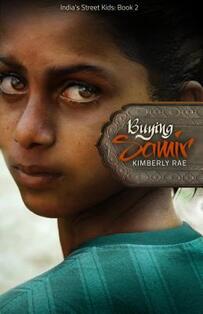
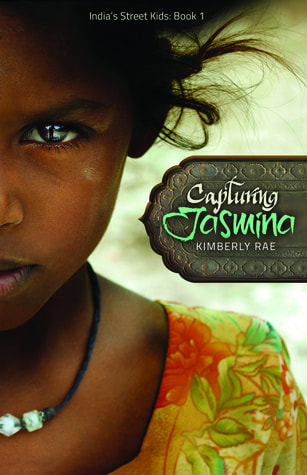
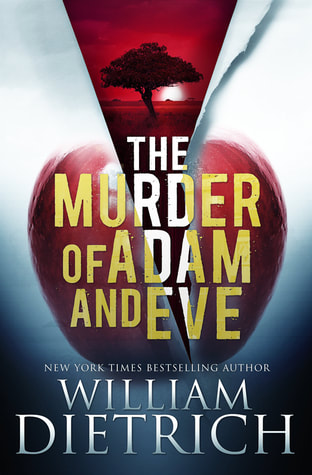
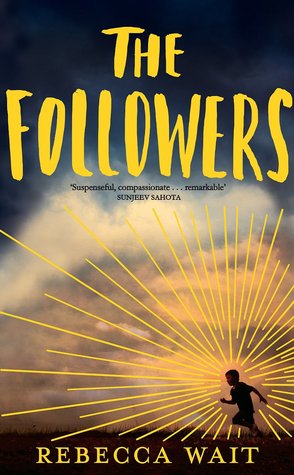
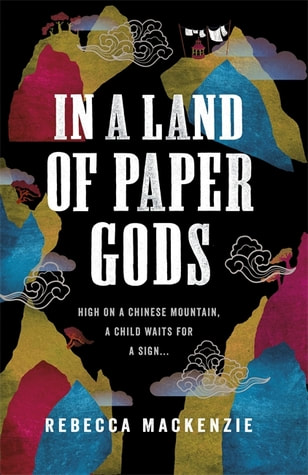
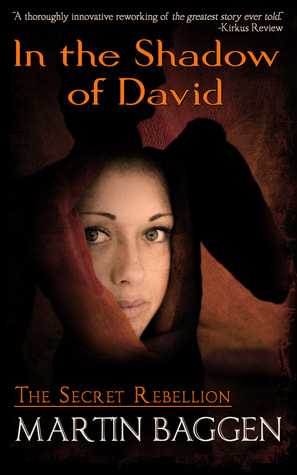
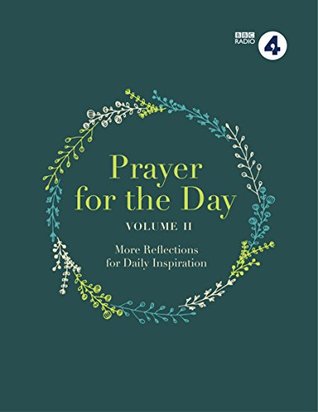
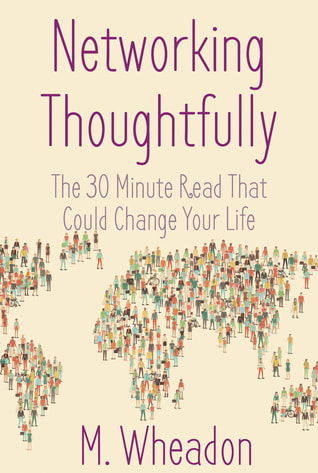
 RSS Feed
RSS Feed